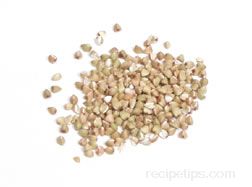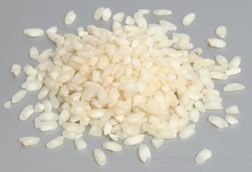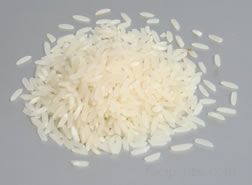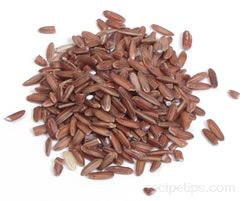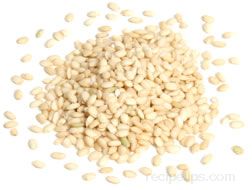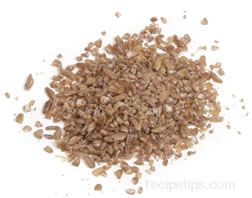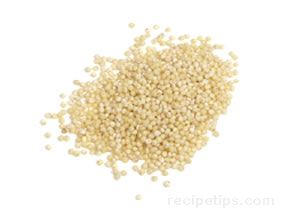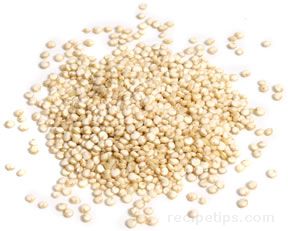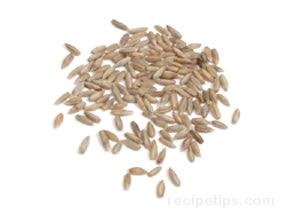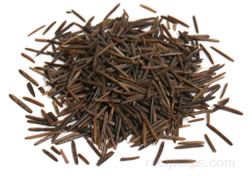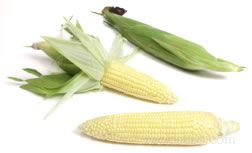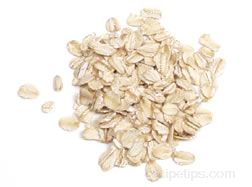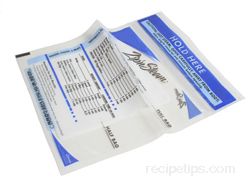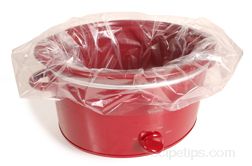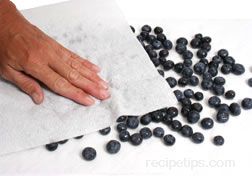Hot Liquid Cooking Techniques for Grain | Cooking Buckwheat
| The three basic techniques for cooking buckwheat with hot liquid are boiling, absorption, and steaming, which are perhaps the most popular methods for cooking most whole grains. Often a combination of these methods is used to cook grain depending on the type of grain, the particular recipe, or the desired effect. Some grains benefit from soaking before they are cooked because cooking with hot liquid alone may not produce the optimum results. |
Hot Liquid Cooking Techniques for Grain
BoilingBoiling is one of the easiest methods for cooking grain. The grain is cooked uncovered in a large quantity of water. The grain and water are then dumped into a colander and drained for several minutes to remove the excess moisture. This method is often the best when there is some doubt as to the correct quantity of water that can be absorbed by the grain. |
AbsorptionCooking grain with the absorption method is, perhaps, the method that most people are accustomed to when cooking many types of grain, but it is often the most difficult. This technique requires that the grain be cooked in a specific quantity of liquid, which can be readily absorbed by the grain. The absorption method may require some trial and error, but it is most often successful when slight adjustments are made to recipes based on variables that may affect the success of the absorption cooking method, such as the accuracy of the heat source, the altitude, and age and quality of the grain. |
SteamingSteaming is the third method for cooking grain and although it is the most time consuming, it produces beautifully cooked grain. The grain slowly absorbs moisture and cooks very evenly. Steaming alone usually is not adequate for cooking many types of grain, so it is often used in conjunction with other cooking methods and techniques. Some grains are boiled briefly before they are steamed while others may simply require soaking in cold water for a period of time to tenderize the grains prior to steaming. |
Cooking Buckwheat
|
Pre-roasting the Buckwheat GroatsThe first step for preparing kasha with boiling, absorption, or steaming is to make sure that the hulled buckwheat groats have been roasted. Hulled buckwheat is available roasted, but if unroasted buckwheat groats are used, it is a simple process to roast, or toast, the grains on the stovetop before continuing. |
| Simply add small batches of the buckwheat groats to a large skillet and cook over medium-high heat. Do not add oil or fat. |  |
| Stir the groats constantly for 4 to 5 minutes. The time can be reduced or lengthen depending on how much of a toasted flavor is desired. Now the buckwheat groats are ready to be cooked with hot liquid cooking techniques. | 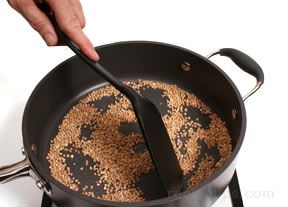 |
Preparing Kasha as a Side Dish or Hot CerealAfter roasting the buckwheat (if necessary) there are several methods for cooking kasha. Two of the most popular methods are described here. It is important to remember that the grains of hulled buckwheat are soft even when raw, so overcooking the grain could turn it to mush. |
|
Preparing Kasha: Method One | |
| Heat a large skillet over medium heat and add just enough oil to coat the pan. Add one cup of roasted buckwheat groats (kasha). | 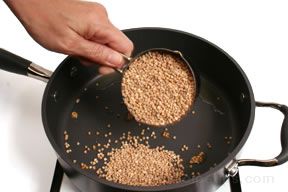 |
| Add one beaten egg to the pan and stir it into the groats immediately. Move quickly to prevent the egg from congealing into a large mass. The egg helps to keep the buckwheat groats from sticking together. Break up any clumps of egg and grain that may occur. |  |
| Continue stirring until the mixture is dry and the grains are separated. | 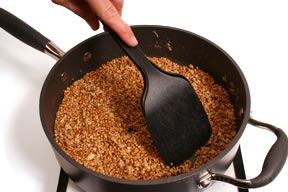 |
| Add two cups of water, stock, or broth to the buckwheat. Reduce the heat to low, cover the pan, and simmer for fifteen minutes or until the buckwheat has absorbed all of the liquid. |  |
| Remove the kasha from the heat and allow it stand (covered) for five minutes. Fluff it with a fork and season it with salt and pepper (or any other way that you wish). |  |
| The kasha should have a rice-like quality. This recipe yields about four one-cup servings. |
 |
|
Preparing Kasha: Method Two | |
| Pour two cups of water into a saucepan and bring it to a boil. | 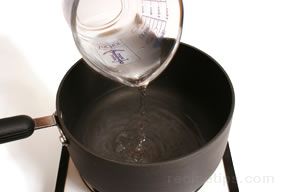 |
| Add two teaspoons of olive oil to the boiling water. |  |
| Add one cup of roasted buckwheat groats (kasha) and reduce the heat to very low. Cover the pan and allow the kasha to simmer for fifteen minutes. Remove the pan from the heat and let it stand covered for ten minutes. |  |
| Remove the cover and fluff the kasha with a fork. Season the kasha with salt and serve it. This recipe yields about four one-cup servings. |  |
| Some people find that coating the kasha with the egg is the only way to keep it from becoming too mushy, while others feel that it is an unnecessary step. When using either method for preparing kasha as a side dish, many people prefer to add additional seasonings such as pepper, garlic, and onion to make the dish more flavorful. |

